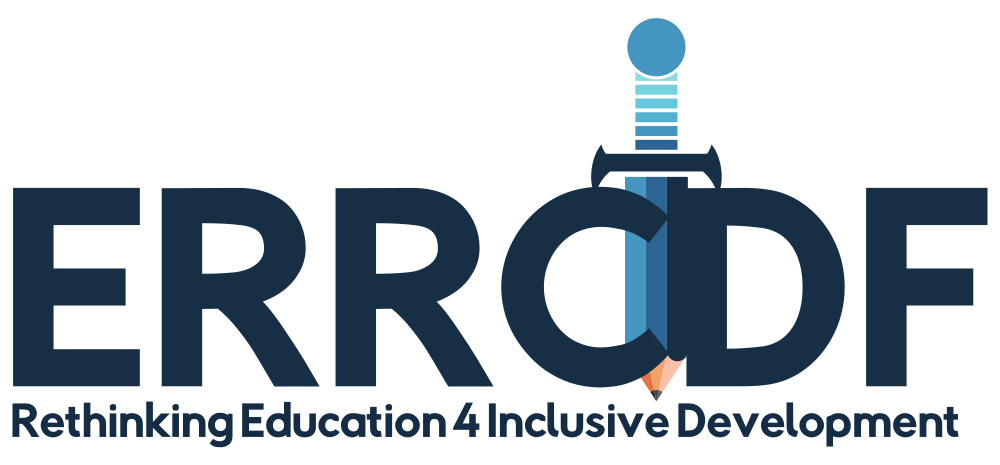Analysis of push and pull factors influencing the migration of Ugandan domestic workers to Saudi Arabia
DOI:
https://doi.org/10.38140/ijss-2024.vol4.01Keywords:
Migration, migrant domestic workers, push factors, pull factors, unemployment, youthsAbstract
The study explored the push and pull factors driving Ugandan domestic workers to migrate to Saudi Arabia. The research paradigm employed was social constructivism, where individuals seek to understand their world and develop meanings based on their experiences. A qualitative approach using a phenomenological research design was utilised. Data was collected from a sample of eighteen (18) respondents through unstructured interviews to identify the factors contributing to the migration of Ugandan domestic workers to Saudi Arabia. Thematic analysis was conducted during data analysis. The migration factors were presented in concept maps created using Nvivo 10.0. The study uncovered that push factors varied from person to person, but major ones included poverty, unemployment, school dropout, family obligations, marital neglect, domestic violence, personal development goals, poor working conditions, work-related challenges, peer influence, and single parenting. Pull factors include the influence of Arabian family culture that promotes the demand for maids, bilateral labour agreements, adventure, attractive job prospects, free travel documents, cost-effective job processes, and an easy migration process. The study concluded that without effectively addressing push factors to provide long-term solutions, the migration of Ugandan domestic workers to Saudi Arabia will persist. It is recommended that the Government of Uganda take steps to create a conducive environment with satisfying employment opportunities for these young individuals to reduce the number of people seeking jobs outside Uganda. This involves generating employment opportunities to regulate internal domestic work and make it highly profitable, thereby encouraging young people to remain in Uganda.
References
Akpomera, E. (2022). Sub-Sahara Africa–Arab states labour migration corridor: Exploitation crisis and emerging trends of protection for migrant workers. Ife Social Sciences Review, 30(1), 51-59.
Anderson, B. (2015). Migrant domestic workers: Good workers, poor slaves, new connections. Social Politics: International Studies in Gender, State & Society, 22(4), 636-652. https://doi.org/10.1093/sp/jxv040
Assumpta, N., & Laiboni, N. (2019). Women’s labour migration on the Africa-Middle East corridor: experiences of migrant domestic workers from Uganda. Global Alliance Against Traffic in Women.
Bakunda, G., & Walusumbi-Mpanga, G. F. (2011). Labour export as government policy: An assessment of Uganda’s potential for export of labour in the framework of regional and multilateral agreements Private sector foundation Uganda. Investment Climate and Business Environment Research Fund.
Beaugrand, C., & Thiollet, H. (2023). 23. Migration intermediation: revisiting the kafala (sponsorship system) in the Gulf. Research Handbook on the Institutions of Global Migration Governance. Edward Elger Publishing.
Blazhevska, K. V. (2017). Factors that influence the process of migration of youth: A case study of Kosovo. Security and Defence Quarterly, 17(4), 48-73.
Boddy, C. R., 2016. Sample size for qualitative research. Qualitative market research: An International Journal, 19(4), 426-432. https://doi.org/10.1108/QMR-06-2016-0053
Boyland, J. R. (2019). A social constructivist approach to the gathering of empirical data. Australian Counselling Research Journal, 13(2), 30-34.
Castelli, F. (2018). Drivers of migration: why do people move? Journal of Travel Medicine, 25(1), 1-7. https://doi.org/10.1093/jtm/tay040
Chahal, M., Kaur, B., Kumari, V., & Boora, S. (2023). Effects of Youth Migration on Well-being of their Parents: An Overview. IAHRW International Journal of Social Sciences Review, 11(2), 335-339.
Chen, C. (2020). Technology adoption, capital deepening, and international productivity differences. Journal of Development Economics, 143, 1-26. https://doi.org/10.1016/j.jdeveco.2019.102388
Chilton, A., & Woda, B. (2022). The expanding universe of bilateral labour agreements. Theoretical Inquiries in Law, 23(2), 1-64. https://doi.org/10.1515/til-2022-0010
Christiaensen, L., Gonzalez, A.S. and Robalino, D.A. (2019). Migration and jobs: Issues for the 21st century. World Bank Policy Research Working Paper, 8867, 1-36.
Chung, D., Bryant, L., Elder, A., & Wendt, S. (2015). Seeking help for domestic violence: Exploring rural women’s coping experiences: State of knowledge paper. ANROWS Landscapes.
Clemens, M. A., Lewis, E. G., & Postel, H. M. (2018). Immigration restrictions as active labor market policy: Evidence from the Mexican bracero exclusion. American Economic Review, 108(6), 1468-1487. https://doi.org/10.1257/aer.20170765
Craig, L., & Churchill, B. (2021). Working and caring at home: Gender differences in the effects of COVID-19 on paid and unpaid labour in Australia. Feminist economics, 27(1-2), 310-326. https://doi.org/10.1080/13545701.2020.1831039
Czaika, M., & Reinprecht, C. (2022). Migration drivers: Why do people migrate?. In: Scholten, P. (eds) Introduction to Migration Studies. IMISCOE Research Series. Springer, Cham. https://doi.org/10.1007/978-3-030-92377-8_3
Della P. F., Montagna, N., & Kofman, E. (2021). Onward migration and intra?European mobilities: A critical and theoretical overview. International Migration, 59(6), 16-28. https://doi.org/10.1111/imig.12815
Djafar, F. (2012). Dynamics of push and pull factors of migrant workers in developing countries: The case of Indonesian workers in Malaysia. Journal of Economics and Behavioral Studies, 4(12),703-711. https://doi.org/10.22610/jebs.v4i12.370
Farbenblum, B. (2017). Governance of migrant worker recruitment: A rights-based framework for countries of origin. Asian Journal of International Law, 7(1), 152-184. https://doi.org/10.1017/S2044251316000011
Fernandez, B. (2011). Household help? Ethiopian women domestic workers' labour migration to the Gulf countries. Asian and Pacific Migration Journal, 20(3-4), 433-457. https://doi.org/10.1177/011719681102000309
Fernandez, B. (2020). ‘We Are Like Oil to Our Government’. In: Ethiopian Migrant Domestic Workers. Mobility & Politics. Palgrave Pivot, Cham. https://doi.org/10.1007/978-3-030-24055-4_2
Fischer, P. A., Martin, R., & Straubhaar, T. (2021). Should I stay or should I go? In International migration, immobility and development (pp. 49-90). Routledge
Gallotti, M., & Branch, I. L. M. (2015). Migrant domestic workers across the world: Global and regional estimates. Geneva, Switzerland, International Labour Organization. ILO Report on Global Estimates on Migrant Workers. https://www.ilo.org/global/topics/labour-migration/projects/gap/publications/WCMS_490162/lang--en/index.htm
Garelli, G., & Tazzioli, M. (2021). Migration and ‘pull factor’ traps. Migration Studies, 9(3), 383-399. https://doi.org/10.1093/migration/mnaa027
Greenfield, P. M. (2016). Social change, cultural evolution, and human development. Current Opinion in Psychology, 8, 84-92. https://doi.org/10.1016/j.copsyc.2015.10.012
Guba, E. G., & Lincoln, Y. S. (1981). Effective evaluation: Improving the usefulness of evaluation results through responsive and naturalistic approaches. Jossey-Bass.
Guloba, M. M., Aliro, E. B., Kasirye, I., & Nattabi, A. K. (2022). Labour externalisation in Uganda: implications for the Agro-Industrialisation Agenda. In Labour externalisation in Uganda : implications for the Agro-Industrialisation Agenda. Economic Policy Research Centre.
Henderson, S. (2021). The legal protection of women migrant domestic workers from the Philippines and Sri Lanka: an intersectional rights-based approach. International Journal of Care and Caring, 5(1), 65-83. https://doi.org/10.1332/239788220X15976836167721
Hoffmann, R., Wiederkehr, C., Dimitrova, A., & Hermans, K. (2022). Agricultural livelihoods, adaptation, and environmental migration in sub-Saharan drylands: A meta-analytical review. Environmental Research Letters, 17(8), 083003. https://doi.org/10.1007/s11205-018-1876-5
Iqbal, M., & Gusman, Y. (2015). Pull and Push Factors of Indonesian women migrant workers from Indramayu (West Java) to work abroad. Mediterranean Journal of Social Sciences, 6(5 S5), 167.
Irwan, N.F.B.M., Mahadzir, I.N.N.B., Azlan, N.A.N.B. And Zainulabidin, N.I.B. (2020). Pull Factors Motivating the Recruitment of Foreign Workers in The Food Service Industry: Sate Kajang Hj. Samuri And Tealive Malaysia. itineraries. American Behavioral Scientist, 64(6), 859-877.
Jiang, J. (2020). Migrant Domestic Workers in the UK: Struggle and Resistance. In Decent Work and Economic Growth: Encyclopedia of the UN Sustainable Development Goals. University of York. https://doi.org/10.1007/978-3-319-71058-7_100-1
Kelly, K. C., Restu, U., & Indriyany, I. A. (2022). Hegemony of Saudi Arabia's Kafala system in the relationship between employer and Indonesian female domestic migrant workers 2018-2020. International Journal of Social Sciences Review, 3(1), 18-33. https://doi.org/10.57266/ijssr.v3i1.83
Khalid, B., & Urba?ski, M. (2021). Approaches to understanding migration: A multi-country analysis of the push and pull migration trend. Economics & Sociology, 14(4), 242-267. https://doi.org/10.14254/2071-789X.2021/14-4/14
Kirkwood, J. (2009), "Motivational factors in a push?pull theory of entrepreneurship", Gender in Management, 24(5), 346-364. https://doi.org/10.1108/17542410910968805
Laiboni, N. (2020). A job at any cost’: Experiences of African women migrant domestic workers in the Middle East. Global Alliance Against Traffic in Women. https://gaatw.org/resources/publications/1009-a-job-at-any-cost-experiences-of-african-women-migrant-domestic-workers-in-the-middle-east
Langevang, T., Namatovu, R., & Dawa, S. (2012). Beyond necessity and opportunity entrepreneurship: Motivations and aspirations of young entrepreneurs in Uganda. International Development Planning Review, 34(4). https://doi.org/10.3828/idpr.2012.26
Lee, E. S. (1966). A theory of migration. Demography, 3, 47-57. https://doi.org/10.2307/20 60063
Malit Jr, F. T., & Naufal, G. (2016). Asymmetric information under the Kafala sponsorship system: Impacts on foreign domestic workers’ income and employment status in the GCC countries. International Migration, 54(5), 76-90. https://doi.org/10.1111/imig.12269
McKenzie, D., Theoharides, C., & Yang, D. (2014). Distortions in the international migrant labor market: evidence from Filipino migration and wage responses to destination country economic shocks. American Economic Journal: Applied Economics, 6(2), 49-75. https://doi.org/10.1257/app.6.2.49
Mohamed, M. A., & Abdul-Talib, A. N. (2020). Push–pull factors influencing international return migration intentions: a systematic literature review. Journal of Enterprising Communities: People and places in the global economy, 14(2), 231-246. https://doi.org/10.1108/JEC-01-2020-0004
Nampewo, Z. (2021). The illusion of greener pastures: Violence and justice for female Ugandan migrant workers in the Middle East. Strathmore Law Journal, 5(1), 11–47. https://doi.org/10.52907/slj.v5i1.139
Olya, H. G., & Han, H. (2020). Antecedents of space traveler behavioral intention. Journal of travel research, 59(3), 528-544. https://doi.org/10.1177/0047287519841
Parreñas, R. (2021a). The mobility pathways of migrant domestic workers. Journal of Ethnic and Migration Studies, 47(1), 3-24. https://doi.org/10.1080/1369183X.2020.1744837
Parreñas, R. S. (2021b). Unfree: migrant domestic work in Arab States. Stanford University Press.
Peters, M. E. (2019). Immigration and international law. International Studies Quarterly, 63(2), 281-295. https://doi.org/10.1093/isq/sqy063
Phillips, M. J. (2023). Towards a social constructionist, criticalist, Foucauldian-informed qualitative research approach: Opportunities and challenges. SN Social Sciences, 3(10), 1-25. https://doi.org/10.1007/s43545-023-00774-9
Porru, S., & Baldo, M. (2022). Occupational Health and Safety and Migrant Workers: Has Something Changed in the Last Few Years?. International Journal of Environmental Research and Public Health, 19(15), 9535. https://doi.org/10.3390/ijerph19159535
Ravenstein, E. G. (1885). The laws of migration. Royal Statistical Society.
Reza, M. M., Subramaniam, T., & Islam, M. R. (2019). Economic and social well-being of Asian labour migrants: A literature review. Social Indicators Research, 141, 1245-1264. https://doi.org/10.1007/s11205-018-1876-5
Richmond, A. H. (1993). Reactive migration: Sociological perspectives on refugee movements. Journal of refugee Studies, 6(1), 7-24. https://doi.org/10.1093/jrs/6.1.7
Segal, U. A. (2019). Globalisation, migration, and ethnicity. Public health, 172, 135-142. https://doi.org/10.1016/j.puhe.2019.04.011
Sheu, J. C., Torres, M. I., Gordon, M. R., Nguyen, P. T., & Coverdale, J. H. (2021). Potential impact of climate change on human trafficking: a narrative review. The Journal of Nervous and Mental Disease, 209(5), 324-329. https://doi.org/10.1097/NMD.0000000000001312
Simpson, N. B. (2022). Demographic and economic determinants of migration. IZA World of Labour, 373, 1-10. https://doi.org/10.15185/izawol.373.v2
Skeldon, R. (2012). Migration transitions revisited: Their continued relevance for the development of migration theory. Population, Space and Place, 18(2), 154-166. https://doi.org/10.1002/psp.667
Thet, K. K. (2014). Pull and push factors of migration: A case study in the urban Area of Monywa Township, Myanmar. News from the World of Statistics, 1(24), 1-14.
Tsegay, S. M. (2023). International migration: Definition, causes and effects. Genealogy, 7(3), 61. https://doi.org/10.3390/genealogy7030061
Urbanski, M. (2022). Comparing push and pull factors affecting migration. Economies, 10(1), 1-15. https://doi.org/10.3390/economies10010021
Van Hear, N., Bakewell, O., & Long, K. (2020). Push-pull plus: Reconsidering the drivers of migration. In Aspiration, Desire and the Drivers of Migration (pp. 19-36). Routledge.
Yeboah, F. K., Jayne, T. S., Muyanga, M., & Chamberlin, J. (2019). Youth access to land, migration and employment opportunities: Evidence from sub-Saharan Africa. IFAD Rural Development Report. https://dx.doi.org/10.2139/ssrn.3523765
Yeoh, B. S., Goh, C., & Wee, K. (2020). Social protection for migrant domestic workers in Singapore: International conventions, the law, and civil society action. American Behavioral Scientist, 64(6), 841-858. https://doi.org/10.1177/0002764220910208
Zanabazar, A., Kho, N. S., & Jigjiddorj, S. (2021). The push and pull factors affecting the migration of Mongolians to the Republic of South Korea. In SHS Web of Conferences (Vol. 90, p. 01023). EDP Sciences. https://doi.org/10.1051/shsconf/20219001023
Downloads
Published
How to Cite
Issue
Section
License
Copyright (c) 2024 Florence Munyonyo Asiimwe, Denis Musinguzi

This work is licensed under a Creative Commons Attribution 4.0 International License.










